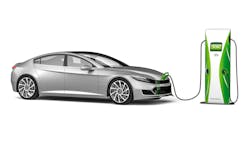Many interested/affected parties are now asking the question: Will EV mandates or “forced conversion” work? Apparently, some state and federal government entities and more than a few major auto manufacturers think so. Others say this: Yep, for sure, mandates will work right up until the time when EV sales do not hit the auto industry’s expectations.
Let’s compare this to another mandate for a supposedly earth-friendly product that was more expensive and less durable than the product it was replacing: the compact fluorescent light bulb (CFB). People resisted the change for years. This may not be the perfect comparison, but it illustrates an important point: Mandates don’t necessarily work.
What do auto manufacturers and other interested parties such as electric utilities need to do to create demand for EVs? For many years, a healthy percentage of transportation industry pundits, including major auto manufacturers privately characterized those convinced by lofty EV growth forecasts as souls lost in a cloud of wishful thinking, drunk on the prevailing political rhetoric, or bedazzled by the sheer commercial hype surrounding EVs. Even as late as 2019, with some available tax credits, there were less than 1.2 million EVs on the roads in the U.S. Chevy canceled its all electric hybrid Volt, and high-profile electric component/vehicle companies like Fisker had gone bankrupt.
Committed to promoting EVs, many electric companies remained resolute through several decades of sporadic EV growth, and even last year during the pandemic they continued doing what they could to address the most sited objections to EVs: reliability, convenience, and total cost of ownership. Utilities are helping with EV education and installing public charging infrastructure; some are even helping customers install charging systems in their homes or businesses at reduced or no cost; and several utilities are offering special rates for vehicle charging, which helps with the total cost of ownership obstacle. Initial cost and range are still sticking points for many buyers.
Few utilities or casual followers of the transportation industry predicted how fast the next watershed event would occur. This year many mainstream automakers advanced plans for launching new electric models, and several committed to completely switch to EVs, including GM (2035), Ford Europe (2030), Honda (2040), Volvo (2030), Fiat (2030) and Mini (early 2030s). These commitments, with accompanying goals for increased EV technology investment, should help achieve the economies of scale needed to deliver more cost competitive cars. Will these collective actions and initiatives finally create significant growth in the adoption of EVs? Maybe, but it will take time.
Similar to the CFB, we are still looking at a government/big business push, not consumer pull. However, there are encouraging signs. Very attractive and hot EVs like the Tesla series and the 1400 HP Mustang Mach E are creating interest. Plus, there is a growing recognition in the car enthusiast/racing community that EVs can do things conventionally powered vehicles cannot. For example, last year the all-electric Tesla-powered Electraliner from EV West set a 229-mph speed record at Bonneville. What’s more, the team’s refueling station, a mobile solar charging trailer created by Tier 4 Solar added to the spectacle with satellite like panels that charged the vehicle’s spare battery packs and ran pit equipment. Automotive trends that go mainstream often emanate from car culture traditions such as racing and backyard wrenching.
Another encouraging sign that market pull is beginning for EVs is the growth of a conversion industry for classic cars. Companies like Revolt Systems, Polykup, ICON, and Everrati are offering conversion services and components needed for DIYers to convert their vehicles to electric. A developing supply of recycled/refurbished electric car batteries also will fuel this trend.
What should utilities be doing to create pull during the present and coming EV push? Well, more of what they have been doing, including education, infrastructure, and EV rates, but potentially more “show-me” stuff. Local EV rallies and car shows, EV conversion and repair clinics, EV technician training and tutorials, etc. For a list of EV events and ideas worldwide go to: https://www.electricvehicless.com/ev-events.
Utilities also may wish to align themselves more closely to the potential new face of transportation. As an industry, electrics could take a leading role in the design of standardized systems for home charging connections that allow the vehicle’s battery to provide backup electric service during emergencies. Not a small task but think how compelling this would be for millions of homeowners.
Americans may grow to love EVs as much as our last generation loved muscle cars. This will likely occur over time despite as opposed to because of any mandates. Young auto enthusiasts who may feel a special connection to modern EV tech could play a key role in the transition, and electric utilities can help!
About the Author
David Shadle
Grid Optimization Editor
Dave joined the T&D World team as the editor of the Grid Optimization Center of Excellence website in January 2016.
Dave is a power industry veteran with a history of leading environmental and development organizations, championing crucial projects, managing major acquisitions and implementing change. Dave is currently a principal at Power Advance, LLC, an independent consulting firm specializing in power project development, research and analysis, due diligence and valuation support. Dave is also a contributing consultant for Transmission & Distribution World. Prior to Power Advance, Dave held business and power project development positions with The Louis Berger Group, Iberdrola Renewables, FPL Energy and General Public Utilities. He is a graduate of Pennsylvania State University, the New Jersey Institute of Technology and Purdue University.
